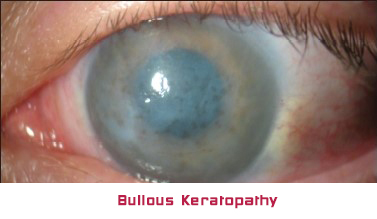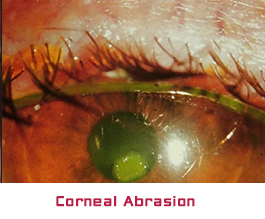Therapeutic Contact Lenses
The primary aim of therapeutic contact lenses is to maintain the tissues of an eye as healthy as possible in the presence of a variety of ocular conditions. Any improvement in vision is secondary. The use of therapeutic lenses is always indicated by the treating ophthalmologist, after being considered in relation to the medical and surgical management alternatives.
The primary aim of therapeutic contact lenses is to maintain the tissues of an eye as healthy as possible in the presence of a variety of ocular conditions. Any improvement in vision is secondary. The use of therapeutic lenses is always indicated by the treating ophthalmologist, after being considered in relation to the medical and surgical management alternatives. Therapeutic contact lenses can be used to manage a wide variety of disorders affecting the front part of the eye as for example bullous keratopathy, corneal ulcers, corneal abrasions, corneal erosions, corneal lacerations, chemical burns affecting the front surface of the eye. Moreover, there are also surgical indications for the use of therapeutic lenses.
Bullous keratopathy is a classic example of an eye condition in which therapeutic lenses can be used. Understanding the way, that pain can be managed in these patients, makes as appreciate the importance of possessing this comfort tool in our hands in terms of helping such patients. In Bullous keratopathy, blisterlike lesions of the corneal surface (secondary to severe corneal oedema), erupt and cause severe pain. The application of a therapeutic contact lens protects the compromised outer surface of the eye from exposure, and can alleviate patients’ symptoms.
Indications of therapeutic contact lenses include:
- protecting the corneal surface from the shearing forces of the eyelid during normal blinking, in conditions of the eye where the outer surface of the eye is compromised due to a number of reasons, leaving the cornea (outermost transparent tissue of the eye) unprotected
- pain management
- promoting epithelialization (healing) or wound closure


Therefore the most common way that mainly soft lenses can be used as therapeutic lenses, is as a bandage lens for an epithelial (surface) defect, which maybe a corneal abrasion secondary to trauma, surgery, corneal condition or persistent epithelial defect. A soft contact lens significantly reduces pain and prevents the lid from disturbing the healing process of the surface epithelial corneal cells. Apart from mechanical protection and assistance in the healing process, therapeutic lenses help to maintain epithelial hydration in conjunction with the use of ocular lubricants. The maintenance of the outer eye surface hydration is highly important in severe dry eye conditions or where the cornea is severely exposed due to eyelid defects. A severe dry eye may be caused by systemic diseases such as Sjogren’s syndrome, or connective tissue disorders such as rheumatoid arthritis. In other instances the therapeutic lens, provides mechanical protection of the outermost surface of the eye from eyelid abnormalities such as the inward turning of the eyelids (entropion) also linked to the scrapping of the cornea by the eyelashes (trichiasis).
Therapeutic soft contact lenses are usually worn on an extended wear or continuous wear basis and therefore silicone hydrogel materials are usually preferred since these allow better oxygen delivery to the cornea (please see soft contact lens page for details). It is also thought that these materials allow faster corneal epithelialization (healing of the cornea) as compared to conventional soft contact lens materials.
Patients wearing therapeutic lenses need to remember that is highly important to keep frequent follow up appointments so that their eye health is continuously monitored. Most of these lenses are worn on an extended or continuous wear basis so monitoring contact lens induced complications is of great importance.


